Here we are, the last fish release for general retail by Replica Toy Fish. Or, the last of the released fish, in truth all of the previous trout, charr, and salmon were all made available at the same time. In this instance, we have a coho salmon (or silver salmon), Oncorhynchus kisutch, another anadromous salmon species found along the coasts of both sides of the Pacific. And with that, we have the last run of figures from RTF that, with one exception, featured Pacific salmonids exclusively (although the brook trout did get two versions…so far…) Like the previous Chinook salmon figure, this individual is painted in its oceanic phase, which is very distinct from the breeding phase, and definitely expands past the usual RTF theme of nearly all freshwater species/morphologies.
And then it was the last of the released-for-sale figures.
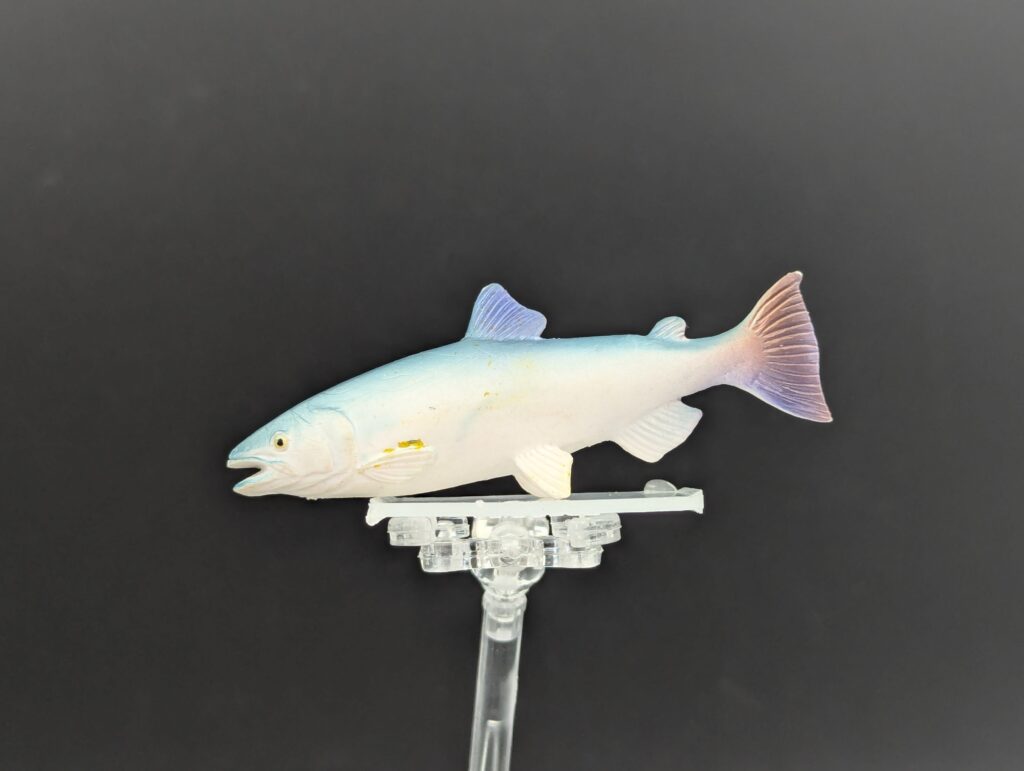
The coho salmon shares a lot of features with the Chinook salmon. Both are found on both sides of the Pacific Ocean, on the western coast of North America and the eastern coast of Asia. It does range further south than the Chinook, as far south as Baja California and further south along Korea and the islands of Japan. They are also popular with anglers and for commercial purposes, so have also been introduced to all of the Great Lakes, as well as other areas in the Midwest.
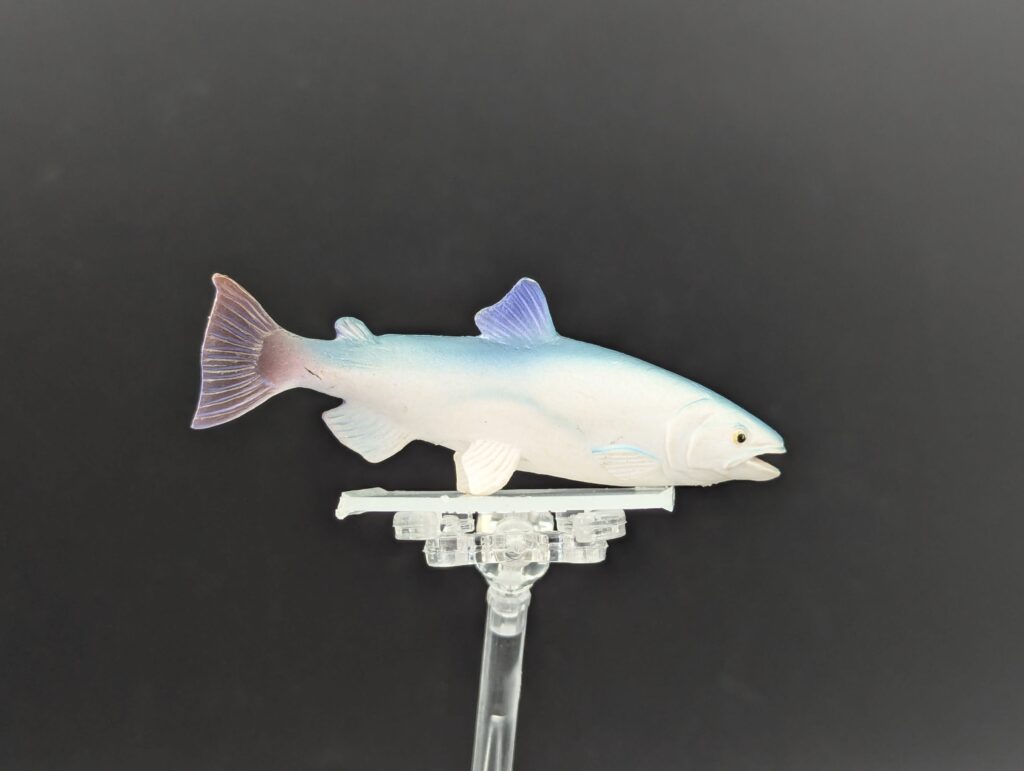
Like the Chinook, coho salmon undergo physical transformations between their oceanic adult phase and breeding phase. As ocean living adults, they tend to be silver with blue backs, covered in black spots (but not usually to the lower lobe of the tail). While in this phase coho are active feeders in open water, starting with plankton, and increasingly feeding on fish as they grow larger. Coho salmon are big fish but not nearly as large as Chinooks, with a large average fish being about 71cm (28 inches) long; very large specimens can be up to 108cm (43 inches). When it is time to head upstream, they develop a hooked snout (kype) with pronounced red colouring; females are a darker red, and males have more pronounced kypes. Based on the colour of the figure, this is absolutely an oceanic-phase fish.
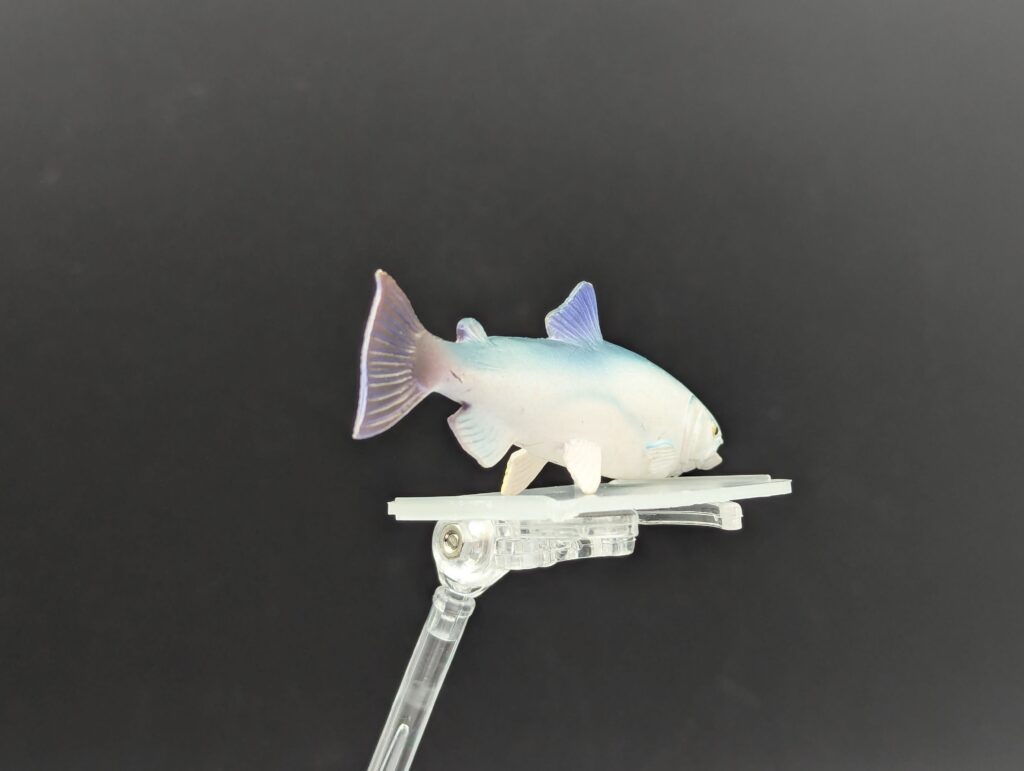
In terms of sculpt, well, this will be easy. You may recall when describing the Chinook salmon it was mentioned that there was some confusions about whether it was meant to be the Chinook, or maybe a steelhead. Partially because the colouring in many ocean-going Onycorhynchus can be similar, but also because they’re physically similar…and RTF often reused sculpts. Well, that’s exactly what has happened here–the coho salmon is the exact same sculpt as the Chinook salmon. So there’s not much to add in terms of the model–still a pretty good representation of an open-ocean adult salmon. The only difference is the representative scale. The model is still 8cm long, but for a large average coho salmon specimen the scale would be 1:9; for a really big 108cm adult, it would be 1:14.
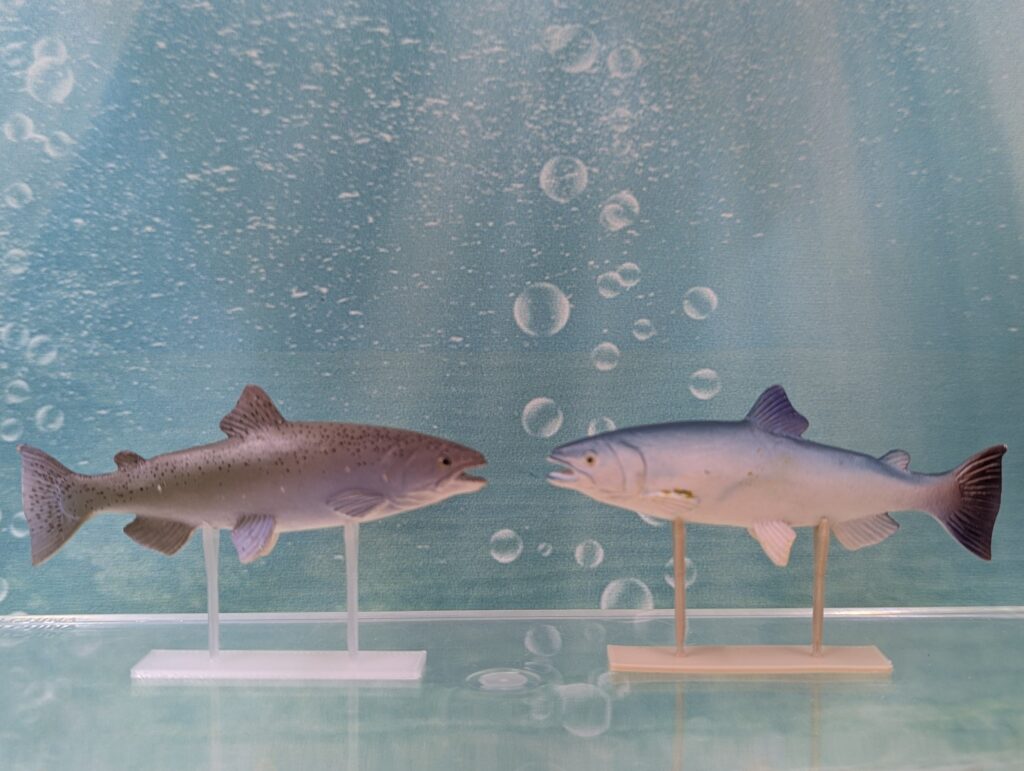
The colouring is distinctively coho and represents the species well, if simplistically. The majority of the fish on the sides and belly are primarily white, I believe unpainted. The back is a striking, dark blue, slightly fading at the edges in the white sides. This same colour extends across the top of the head through to the nose, and there are a few light bands of blue on the sides. These give an appearance of depth, but are not symmetrical, so it’s difficult to determine intent. The dorsal and adipose fins are also blue, with the dorsal fin almost indigo, and the entire tail is a dark purplish colour. The pectoral and pelvic fins are unpainted, although there appears to be hint of a blue wash on the anal fin and and one pectoral. The open mouth is unpainted, but in this instance the white is actually correct as coho have white gums (it’s the Chinook that should have black gums). The eyes on my figure at least are painted quite carefully, a black centre with a ring of gold around them, on the bulging eye sculpt. That yellow mark on the left pectoral is a factory blemish.
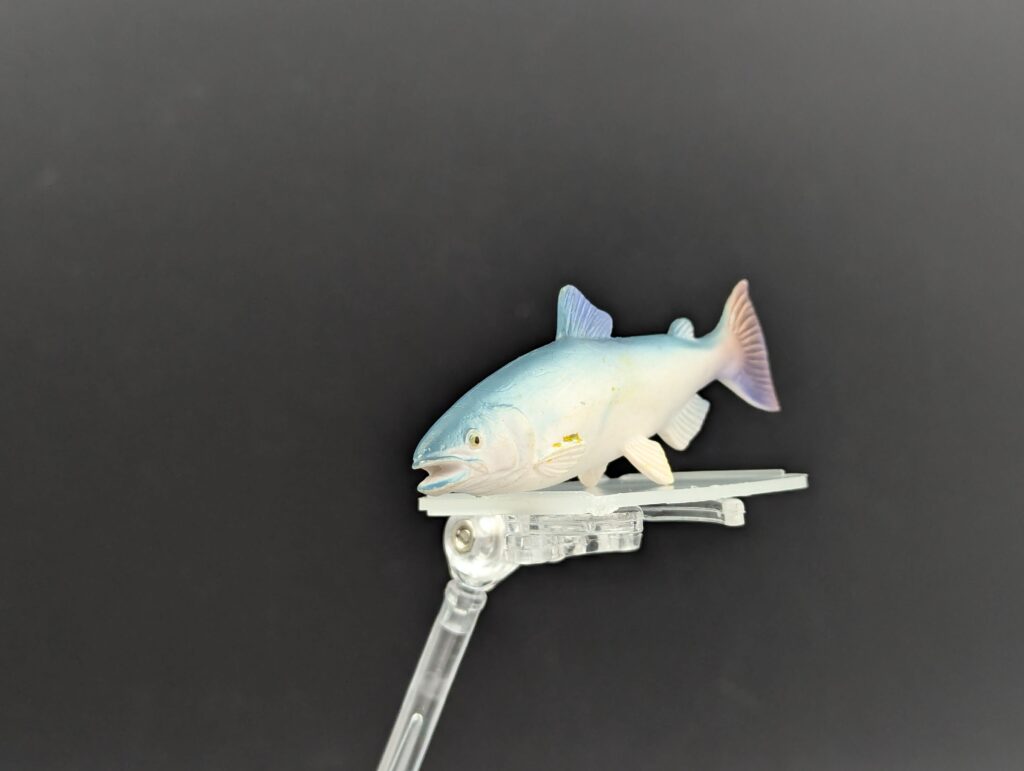
Overall, this is a pretty reasonable representation of a coho salmon–the blue is pretty characteristic although the body should be more silvery than white. The one major thing missing–no spots on the body at all. This is a big miss, as the back and maybe the upper tail lobe should have distinct, small spots (although not to the extent seen in Chinooks). Still, a great if rough figure. The paint application and production has issues–there are weird gouges in the body, and the paint has scratches. I won’t complain though–I’ve mentioned that a lot of salmon figures are the distinctive breeding phase, so an oceanic adult is great to have. Unfortunately, these figures were not around long, becoming among the rarest available. But…not as rare as what will be coming next–a few RTF models that were not officially made available for sale but there’s a few out there…and one that never was at all! I’ll be getting to those in the next little while!
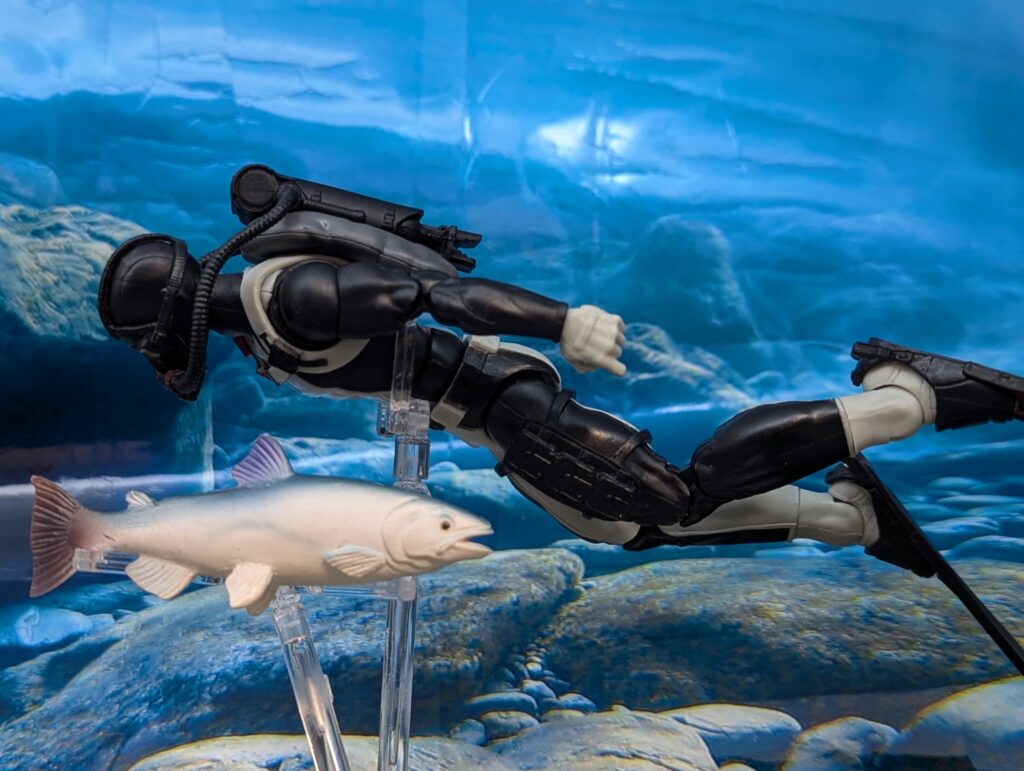
Disclaimer: links to Ebay and Amazon on the AnimalToyBlog are affiliate links, so we make a small commission if you use them. Thanks for supporting us!



